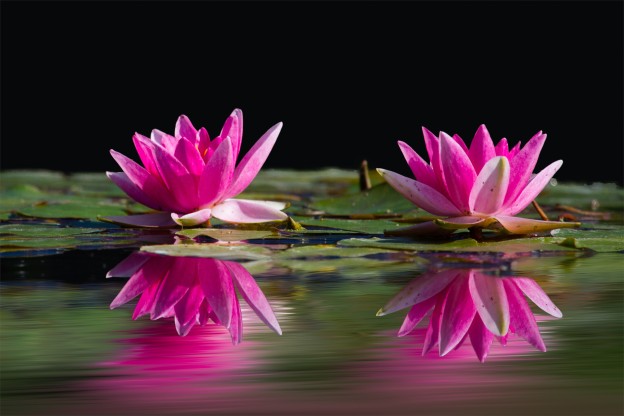The autumn and winter are the toughest months of the year for our garden ponds. This means it’s vitally important to tackle those essential pond care jobs before the coldest weather comes.
Get it right and you’ll ensure your fish are healthy, pond plants thrive and that it all looks beautiful when the warmer weather comes around again.
6-step autumn and winter pond care action plan
Here’s our foolproof autumn and winter pond care guide that will help you take care of these remaining garden pond care jobs quickly and easily.
1. Remove fallen leaves
We all love to crunch our way through those autumn leaves, but they’re one of the main causes of pond problems during the autumn and winter. Once they fall into your pond, they start to decay and can disrupt the fragile ecosystem of your pond, killing your fish and harming any wildlife living there.
So make it your priority to skim away those leaves once they start to fall before they can do any harm. Don’t forget to remove them from any decorative stones, pond pumps and pond ornaments, too!
If your pond lies within close range of a tree, or leaves are a real problem, it’s also worth considering covering your pond with protective netting (also useful when it comes to deterring predators – see below – or investing in a pond filter.
2. Keep your pond free from ice
When the big freeze comes, it’s vital to make sure that your pond isn’t completely covered with ice. Gases from any rotting plants or organisms can soon build up, precious oxygen levels can drop and it could potentially damage your pond liner.
Prevent this from happening by placing a floating pond de-icer, a clean ball or a clean plastic bottle containing a few stones into the pond water.
If you leave it too late, don’t panic. Simply pour a small amount of warm water onto a small patch of ice, allow it to melt, and keep the hole open using the tips above. Whatever you do, definitely don’t shatter the ice as this can traumatise and even kill your fish.
3. Give your pond plants some love
Another great way to avoid rotting leaves, dying plants and other cold season havoc is to look after those pond plants before the weather gets too cold.
Start by removing any dead or dying leaves from your pond plants and tossing them on your compost heap. Also, make sure that their roots are planted deep enough so they have a better chance of surviving the winter.
Then, completely remove any plants that don’t like being submerged in the icy water, such as Japanese Iris or Cardinal Flower. Pop them into your garden until the spring rolls around again, top up with some nourishing premium grade topsoil, and you’ll have healthy, strong plants for next year.
4. Cut down on fish food
Even though fish don’t hibernate like many other animals, they do descend to the deeper, warmer waters in your pond and their metabolisms slow significantly once the outside temperatures drop. This means that you’ll need to feed them much less than you usually do.
Stick to just one or two small helpings per week during the autumn. Once temperatures drop below 10°C, you should stop feeding them altogether.
Most importantly, be sure that there’s no food left floating around as this could pollute your pond water, damaging the pond ecosystem.
5. Beware of predators
The autumn and winter are dangerous months for any fish living in your garden pond as there’s less food around and so more hungry predators looking for a snack. Make sure they don’t take a fancy to your Koi Carp or goldfish by covering your pond with high-quality netting or adding a scarecrow to your garden.
6. Consider switching off your pond pump
If temperatures drop below freezing, it’s a wise idea to turn off your pond pump.
Cold water contains plenty of oxygen already, and the metabolism of your fish will slow down anyway. Plus, you’ll save money on electricity costs and give yourself have a great opportunity to clean the pond pump ready for next year.
So, before it gets too chilly outside, make sure you’re preparing your garden pond for the colder weather. It needn’t take long and that little bit of effort will be well worth it! It’s also worth noting that wooden pond features need extra protection during the colder months, which is why we recommend considering attractive decorative stones as a fuss-free alternative for your water feature.
